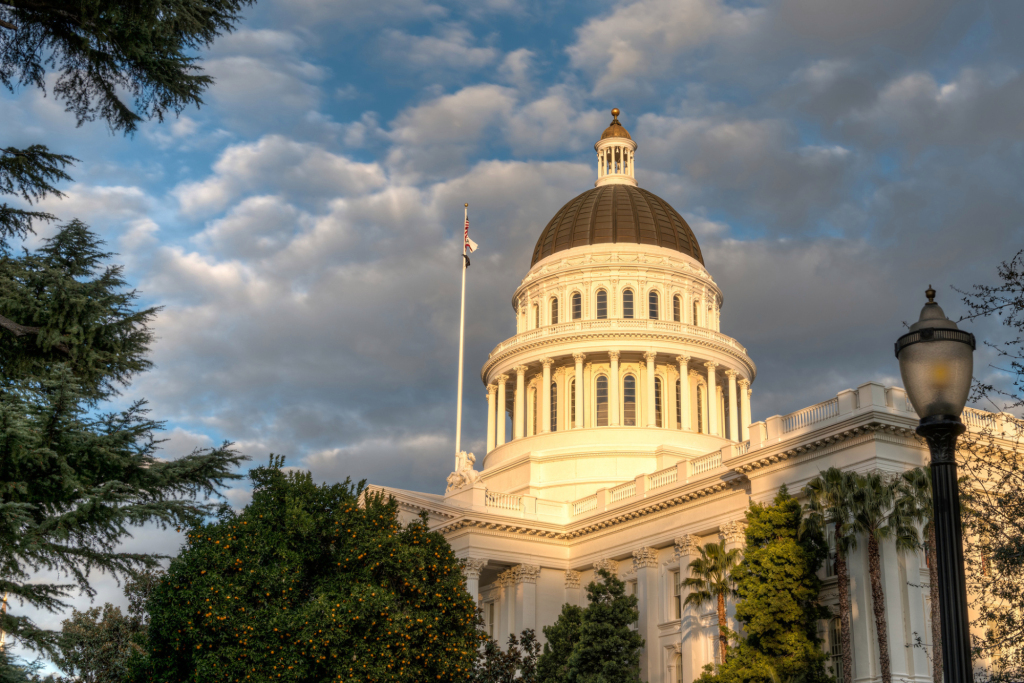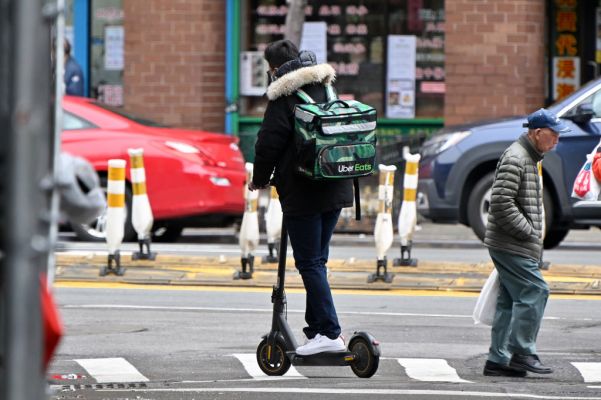An exclusive analysis of lobbying expenditures in Sacramento by the Bay Area News Group reveals how the coronavirus pandemic has changed priorities and galvanized certain special interests, with the California Teachers Association assuming the role of the state’s top influencer.
The state’s main teachers union spent $2.85 million during the first quarter of this year — more than twice as much as the second and third ranking lobbying funders, two Big Oil interests, combined — as it pushed teachers to the front of the line for vaccines and resisted efforts to force a return to the classroom.
The review also shows the resiliency of the lobbying industry: Groups spent $368.5 million over the year since the pandemic emerged to make their views known under the Sacramento Capitol Rotunda, down only slightly from the previous year despite health precautions that shifted many legislative functions online.
Their pursuit of political influence comes at a critical juncture, amid an enduring pandemic, a national economic crisis, potential electoral shake-ups — including an election to recall Gov. Gavin Newsom and the 2022 midterms — and a $76 billion state budget surplus.
To illustrate special interests’ role in these critical issues, the Bay Area News Group conducted its analysis of state lobbying expenditures by downloading and refining raw data from the California Secretary of State’s Cal-Access website. California law requires interest groups to disclose quarterly what they spend to drive the legislative process.
“We’ve never seen a crisis of this proportion with coffers this large,” said David McCuan, a Sonoma State University Professor of Political Science. Like all money in the political realm, lobbying expenditures are a form of sophisticated communication, he said, made even more complicated by the way that COVID-19 has restricted access in Sacramento. “If you want to know what a politician believes or an organization believes, you look at where they put their money.”
The CTA is no newcomer to this scene. The 300,000-member Burlingame-based organization ranks third in total lobbying spending since 2017, spending $18 million, a figure exceeded only by Western States Petroleum and Chevron, which spent $30 million and $27 million, respectively. Still the union’s current activity is remarkable — it is on track to blow past the $4 million it spent on lobbying in 2020, funding television and digital advertisements advocating to continue online classes for more than six million school children and obtain vaccines for one of the state’s largest workforces. The teachers union also topped the list of interests during the second quarter of last year, in the pandemic’s first months.
“We’re very grateful that the governor set aside vaccines for teachers and that was one of the outcomes” of our lobbying, said Lisa Gardiner, a union spokesperson.
“When it comes to safe reopening there have been challenges and complexities around safe instruction for schools,” said Gardiner. “We needed personal protective equipment, safe ventilation, vaccines, small cohorts of students and lobbying is education. I used to work in the capital, that’s what advocacy is, its educating people about perspectives and situations…We feel we have a social responsibility to do that.”
California is among the last states to reopen campuses, drawing criticism from some parents groups who claim the state deferred to the deep-pocketed teachers union at the expense of students, who continue to slog through online classes from their homes. School closures continue in the Golden State despite growing scientific evidence that they could safely reopen.
The BANG analysis found that the biggest spender on lobbying since early 2020 had nothing to do with the pandemic. Big Tobacco, specifically North Carolina-based RAI Services Company, poured more than $8.7 million last year into its failed effort to defeat SB 793, a new law that bans the sale of flavored tobacco products in California. Its spending dropped off thereafter.
But since 2021 began, the legislature’s focus — and that of the special interests — has sharpened. With California unexpectedly awash in revenues, other advocates for public sector employees have joined the teachers group as top spenders on lobbying. The California State Council of Service Employees, an affiliate of the Service Employees International Union, spent $889,000, the County Behavioral Health Directors Association spent $632,000 and the California School Employees Association spent about $185,000 in the first quarter.
Counties and cities are also spending large amounts of money on lobbyists to secure a portion of state funds, with Contra Costa County reporting $725,000 in the first quarter, more than all other government agencies.
Contra Costa County’s Senior Deputy Administrator Lara Delaney, who supervises lobbying contracts and legislative efforts, acknowledged “unusually high” expenditures, but said the bulk of the money, $656,989, paid for professional association dues, particularly for health and welfare professional organizations.
Alameda County came in second with $487,000 and Los Angeles County, the state’s largest and most populous, spent $412,000.
McCuan noted that the pandemic has shifted critical responses for testing, vaccine distribution and overall, increased healthcare and other government responsibilities onto local jurisdictions, which have increased lobbying activities in an effort to recoup some of the additional costs associated with COVID-19 mitigation.
“Many governments have had to dip into reserves to pay for response, and that requires relief from Sacramento for governments to remain solvent, so they’ve picked up their game in Sacramento,” McCuan said.
After years of droughts, wildfires and threatened electrical shortages, public utilities are also high on the list of top spenders in the first quarter of 2021: Pacific Gas and Electric spent $636,000, Sempra Energy spent $475,000 and the Metropolitan Water District of Southern California spent $458,000.
While some groups appear to have tapered off lobbying efforts during the height of the coronavirus pandemic last year — the Western States Petroleum Association halved its annual spending in 2020, and Equality California, the civil rights organization, spent nearly $1.7 million in 2019 and only $205,000 in 2020 — many other groups seem to have continued lobbying unabated.
The Howard Jarvis Taxpayers Association ramped up spending last quarter, reporting more than $946,000 in lobbying expenditures, or about half of its annual expenditures since 2017. The tax relief advocates were the fourth leading spender in the first quarter.
Scott Kaufman, a lobbyist for the 250,000-member organization, said one of the major issues the association pursued in the state capital was legislation to protect property tax advantages for certain kinds of homeownership transfers between parents and children, which were nullified when voters passed Proposition 19.
One of the most challenging aspects of working in Sacramento now, Kaufman said, is maintaining informal networks since the State Capitol Building implemented new health precautions. In prior years Capitol hallways during legislative sessions have been a beehive of conversation and influence-peddling, but now they are mostly quiet.
“Legislators and their staff are not just going to work with you just because you asked them to,” said Kaufman, who joined the Jarvis organization during the pandemic. Kaufman visited the statehouse last week for the first time since the pandemic.
“I had to wait outside until the committee hearing started. The Sergeant of Arms walks you from security to the elevator,” Kaufman said. “They put you in the elevator, you go to the floor. Another security guard greets you at the door. Then I was in overflow because only so many people can sit in the chamber and I had to just sit quietly because you’re not allowed to talk.”
“It certainly makes having simple conversations very difficult,” he said.










